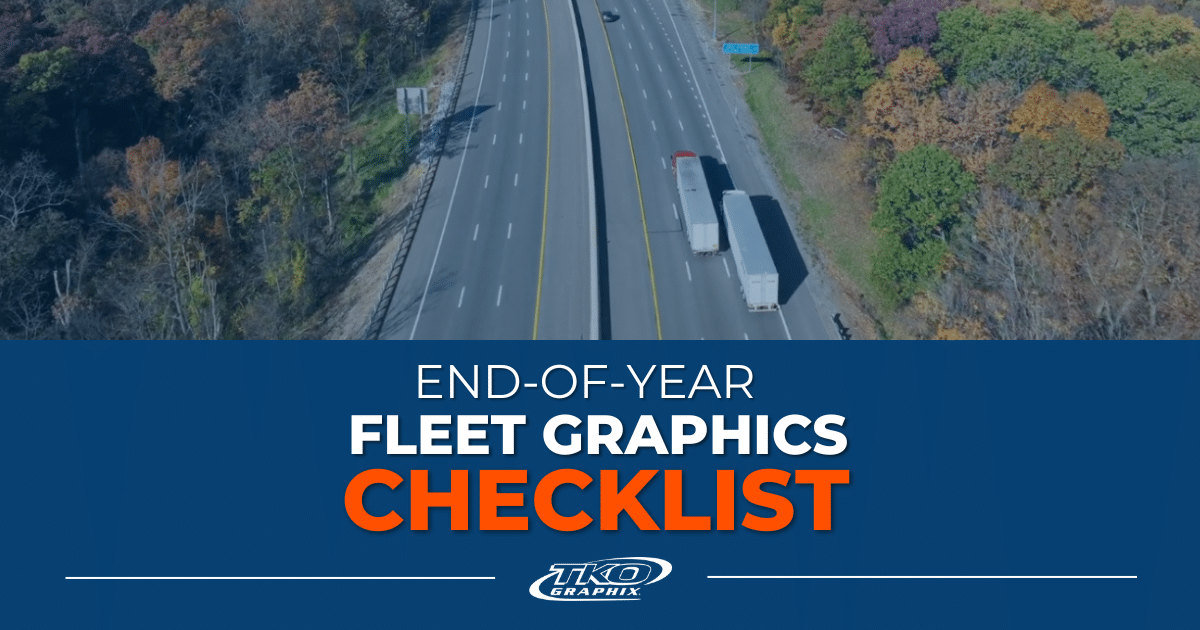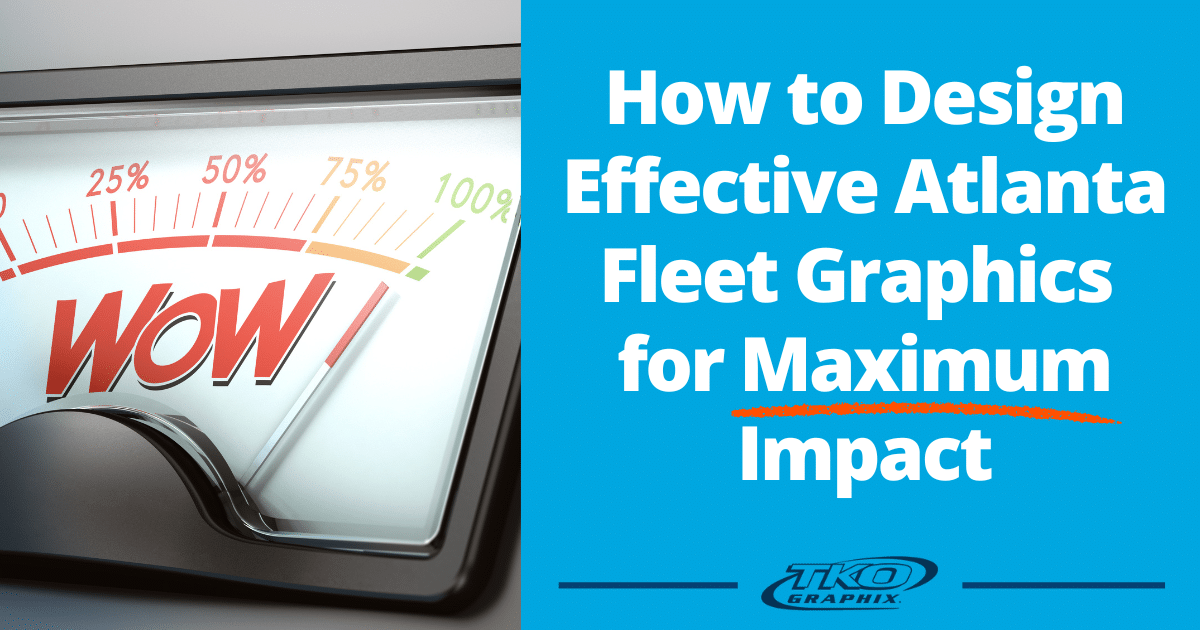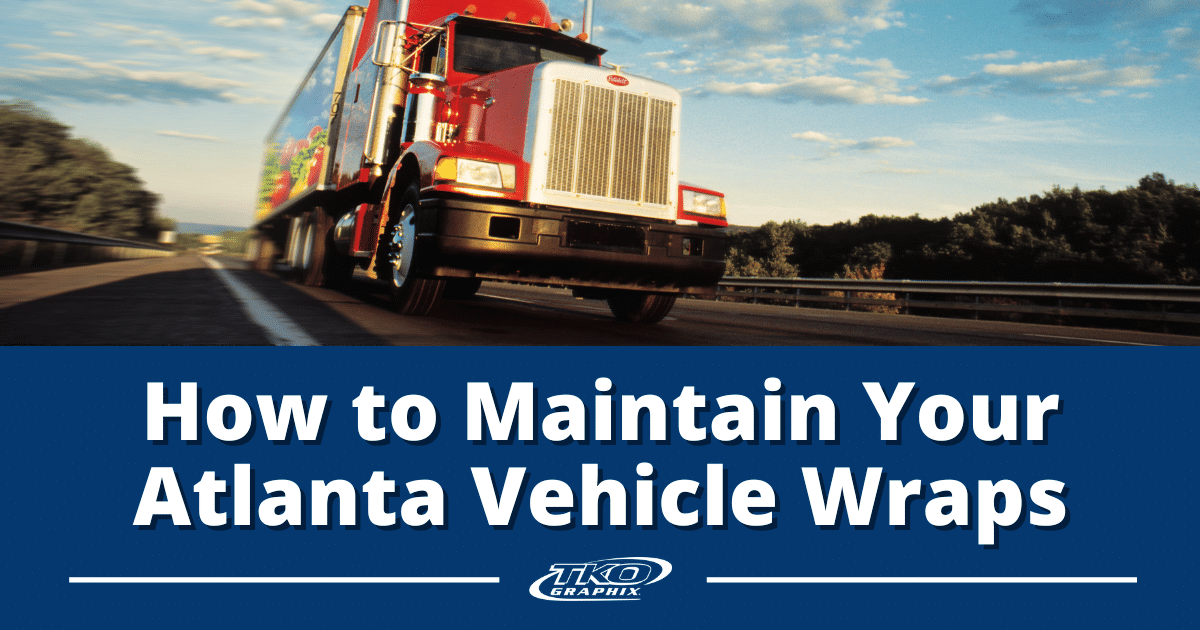So, how can you avoid costly vehicle graphics mistakes? Last week I was chatting with a new customer, Jeff Moody, from Paris Illinois. His family farms more than 5,000 acres, and among other things, they own and operate a trucking company with more than a half-dozen trucks, trailers, and dedicated drivers. My point is they stay busy. So, I asked Jeff, why they’d driven their 53-foot trailers all the way to Indianapolis from Paris, Ill. Jeff told me he came to us because it was better to have it done right the first time. He had heard of us from friends who had used us. He wanted to avoid costly vehicle graphics mistakes.
How to Avoid Costly Vehicle Graphics Mistakes
His story was something I’ve heard often in my eight years with TKO Graphix; he shared that another provider had wrapped his fleet vehicles with an inferior product and it was coming off. Not only was it bubbling, ripping, and pulling away, but adhesive and pieces of vinyl were stuck to the trailers. It was difficult to remove without damaging the vehicle’s finish. (They found a citrus-based cleaning product that helped.) This time Jeff was going to avoid costly vehicle graphics mistakes.
The Wrong Material
Scott told me the provider had previously installed decals for Moody Farms and they were fine. However, although the wraps looked good, they started coming apart at the seams. I took an educated guess that a noncompliant material designed for flat decals was used on the wrap. A full wrap requires compliant material that can be heated and formed around curves. Noncompliant material is less expensive, but if used for the wrong application costs the customer more in the long run.
Types of Adhesive Vinyl
“Vinyl begins as Poly Vinyl Chloride (PVC), then additives create the vinyl film used to wrap vehicles. Plasticizers are added for flexibility, pigment is added for color, then UV absorbers and heat stabilizers are added to create a vinyl that will conform to a vehicle’s shape and withstand the elements. Cast, or “premium vinyl,” is a process like making a cake. Ingredients are mixed, and solvents are added, then poured into a casting sheet, which is baked, allowing the solvents to evaporate.
This process makes a very flexible, thin, shrink-resistant material. Another manufacturing option is the calendar or economy process. In this method, ingredients are mixed, but solvents aren’t added. Like pizza dough, the vinyl is rolled and stretched into the desired shape. This material is thicker and having been stretched, it tends to shrink.” — FAQ: Are There Different Types of Vinyl Graphics Materials?
Here’s another example
“TKO Graphix National Account Manager, Glenn Burris, received an inquiry about installing full wraps on a fleet of vehicles. The graphics had already been produced by another printer, not by TKO. The company wanted certified experienced installers who would stand by their work. We offer this, but there was a problem. There are hundreds of materials for vehicle graphics. The material on which the graphics were printed wasn’t recommended for a full wrap.
It was noncompliant, which means it’s not designed to stretch around complex curves. When the producer of the graphics was questioned about the choice of vinyl, they said they’d done hundreds of law enforcement decals without a problem. Besides, the material was less expensive than compliant vinyl.
The material they chose was designed for decals, like a police shield, which lay flat on the surface of a vehicle, but was never intended to be stretched around a curve. This material, if used on the complex, contoured areas of the wrap, would almost certainly lead to lifting, and then come loose, bubble, and peel away. We recommended reprinting on a 2ml cast-compliant vinyl, as endorsed in this 3M video.” — Good Vehicle Graphics Gone Bad.
Sometimes it’s the Installation
Sometimes the story is about incompetent or inexperienced installers. Here’s an example that was shared by a local news affiliate. “The owner of the vehicle took photos of his car after the wrap. There were warped spots, patched areas, and knife cuts in the paint. When he picked up his car it was full of trash including someone’s credit cards, tools, and a pair of socks.
“The car was nearly out of gas, had 200 miles on it, and there is video on Instagram of the vehicle being driven full of people dancing in their seats. It made the car owner feel as if his new car was no longer new.” — A Vehicle Graphics Horror Story and How to Avoid it.
Finding the Best Installers
Finding the best vehicle graphics installers begins by vetting providers that have been in business for more than a year, have good reviews, and a current portfolio of their work. Next, it’s critical to check the training of the installation teams. Are they certified? “There are two primary vehicle graphics installation certification programs. PDAA (Professional Decal Application Alliance), which is administered by SGIA (Specialty Graphics Imaging Association), and UASG (United Application Standards Group), through 3M. Both require extensive training and testing, and there are different levels of certification.
For example, PDAA offers both basic and master certification. According to PDAA, “Basic certification accommodates companies that have absolutely no interest in doing vehicle wraps with complex curves.” So be sure you have an application team certified for the type of installation required.” — How to Find the Best Vehicle Graphics Installers.
There’s No Short Cut to Doing it Right
Occasionally the problem is shortcutting the installation, such as the example of Terry from Knott’s Farms (who traveled from Tennessee) explained. “I met Terry Wells, the transportation manager for Knott’s Fine Foods, in the installation bay at TKO Graphix. He was there to pick up a 53-foot trailer we wrapped for his company.
I introduced myself and asked him what he thought of the wrap. He was more than pleased. He was delighted. You see, he came to us after he’d had a less than happy experience with another provider. We know how to wrap rivets. The other provider didn’t.”
Terry pointed to the rivets on the side of the trailer (there were hundreds of rivets) and said, “We choose TKO Graphix for our trailer wraps because the work another provider did three years ago is coming apart. See these rivets; the other people didn’t do a professional job like this (TKO Graphix work)” Here’s a video of what Terry had to say, Knott’s Wholesale Foods Trailer Wrap.”
How to Avoid Costly Vehicle Graphics Mistakes
If you want to avoid costly vehicle graphics mistakes hire a pro. The truth is that even hiring what you believe to be professionals may not be enough. So, do your homework and hire an experienced, trustworthy pro whether it’s vehicle graphics or a new roof on your home. Hiring vetted professionals is almost always better than hoping an amateur can do the job. If you’d like to talk to a professional Contact Us.






